Yosemite National Park – one of the busiest national parks in the country – with lots of breathtaking vistas, incredible hiking opportunities, wildlife that will amaze, and that uniquely indescribable feeling that only national and provincial parks can offer. But if you’re interested in Yosemite RV camping, there are some things you should know before you go!
Today we hope to prepare you for a fabulous trip to Yosemite by sharing some tips that’ll help you to plan ahead for an experience of a lifetime. Let’s do this!
- 1) Yosemite RV Camping: A Few Reservations
- 2) Got a Big Rig? You Need to Know This About Yosemite RV Camping
- 3) Don’t Like to Plan Ahead? You Should Know This About Yosemite RV Camping
- 4) Not a Fan of Boondocking? You’d Better Know This About RV Camping in Yosemite
- 5) Hoping to Camp at Yosemite in Winter? You Need to Know This
- 6) About Those Bears – Here’s What You Need to Know
- 7) Are You a Hiker? You Need to Know About These Yosemite Gems
- 8) Looking for the Key Locations in Yosemite? Here’s What You Need to Know
- 9) Have You Enjoyed Yosemite RV Camping?
Yosemite RV Camping: A Few Reservations
A couple of VERY IMPORTANT notes as we write this in early May of 2022…
A reservation will be required just to drive into Yosemite National Park from May 20 to September 30, 2022, during the peak hours of 6 AM – 4 PM. This temporary system is in place while numerous key visitor attractions are closed for infrastructure repairs, helping to prevent undo traffic jams and delays.
Even if you have a reservation for a campsite in Yosemite, you’ll also need to reserve a timed-entry ticket. You can make your reservation ($2 per vehicle) starting at 8 a.m. on March 23, and it’s valid for three days, one vehicle, and all the occupants of that vehicle. You don’t need a reservation to enter the park at non-peak hours… but that means getting up VERY early, or arriving late enough that you’ll miss the peak sun.
The park’s website offers more information about Peak Entry reservations, including how to secure them before you arrive.
Also, Glacier Point Road is closed until May 2023.
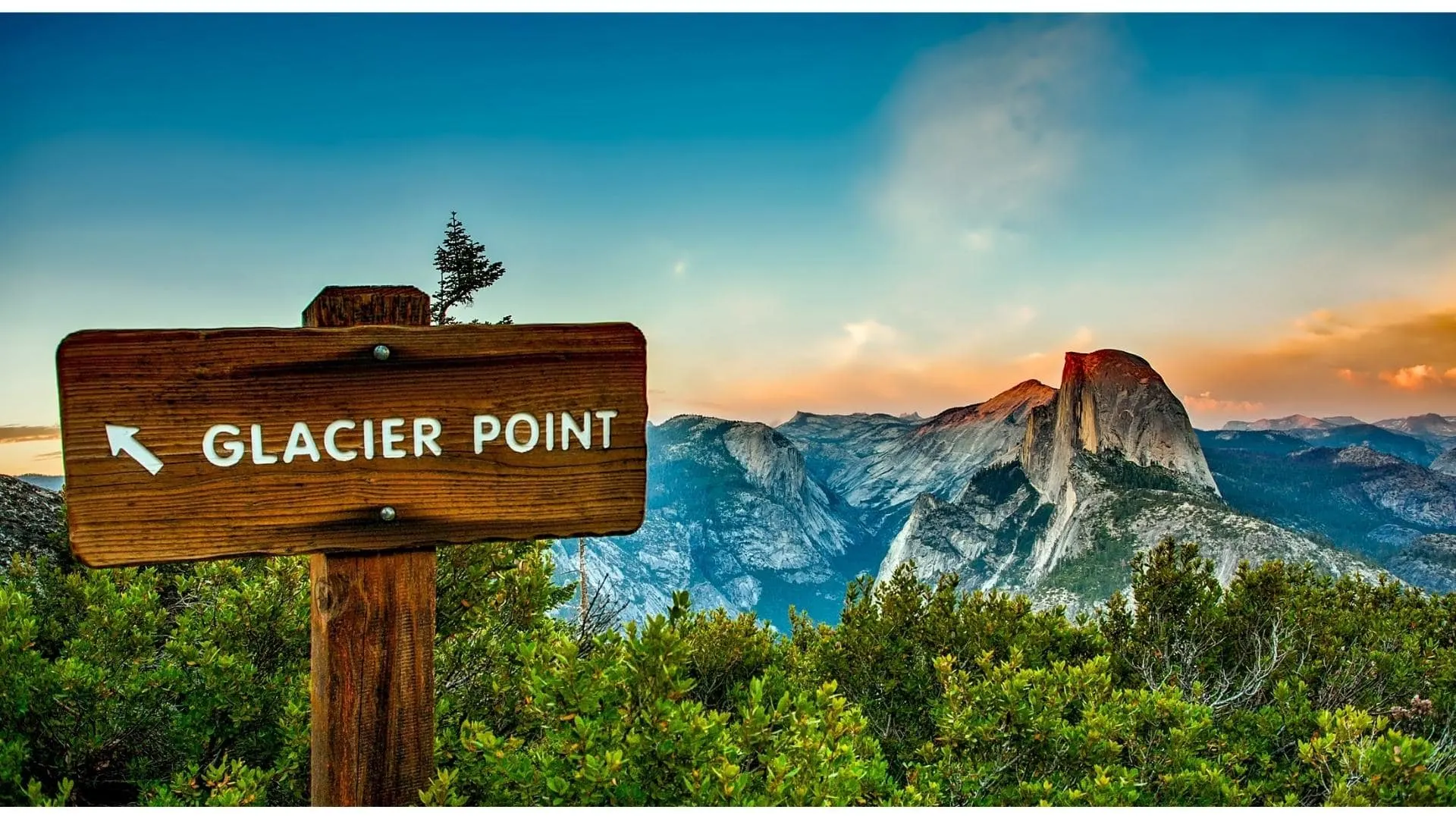
If you’re planning to visit Yosemite National Park in 2022, you need to know that Glacier Point Road is closed until May of 2023.
Got a Big Rig? You Need to Know This About Yosemite RV Camping
This is true in many national parks so it may not surprise you, but you need to know that Yosemite has RV size restrictions. If you’ve got a big rig RV, you may be out of luck when it comes to camping inside Yosemite.
Here’s the skinny: Yosemite National Park as a whole has restricted motorhomes to 40’ in length, and trailers to 35’. So, if you’ve got a motorhome that’s more than 40’ in length like we do, or you’ve got a travel trailer that’s longer than 35’, you’re not driving into Yosemite with them.
HOWEVER – most Yosemite campgrounds actually limit motorhomes to 35’ and only a few Yosemite campgrounds allow travel trailers that long.
All in all, then, if you travel with a large RV, you’re likely to have difficulty getting into a campground at Yosemite as your options are very limited.
You can, of course, look outside the park itself to area commercial campgrounds such as Yosemite Pines and High Sierra RV parks.
For more information on camping with a big rig, have a look at our post on big rig RV parks.
Don’t Like to Plan Ahead? You Should Know This About Yosemite RV Camping
Most national parks open their reservations six months in advance. Yosemite doesn’t operate this way, however.
What you need to know is that Yosemite RV camping reservations are released on the 15th of the month, five months in advance, and are available in one-month blocks. Confused? That’s because it’s confusing!
What you’ll need to do is be prepared when your reservation window opens. In advance, go to recreation.gov and complete the initial steps of the reservation process. If you’ve got that much completed ahead of time, you’ll be ahead of the game.
Be sure to have available all of the necessary information including the name of the campground in which you’re hoping to stay. (We encourage you to have three choices ready, in the event that your top choices are unavailable.) Also be prepared to give them the length/size of your RV, the number of travelers, and have your credit card handy.
If you don’t happen to be able to grab a site for your targeted time frame, you may want to check out Campnab. Campnab scans for cancellations and openings constantly, and you just may be able to score a reservation right where you most want to be. You’ll set up your search parameters, and Campnab will find cancellations for you.
Learn more in our post all about Campnab, and check out our video detailing our 5 favorite trip planner apps:
Not a Fan of Boondocking? You’d Better Know This About RV Camping in Yosemite
Boondocking is our favorite way to camp, but we recognize that not everyone is comfortable with boondocking. That said, we think with a little practice, you can be an A+ boondocker in no time, and we fully encourage you to give it a try. You can’t even begin to imagine the awesome campsites you’ll be opening yourself up to once you become comfortable camping off the grid.
Why are we mentioning this? Well – if you want to camp in Yosemite, you’ll need to be a boondocker! Yosemite campgrounds don’t have hookups! But don’t despair. We’ve gotcha covered.
First, there are places within Yosemite to fill your freshwater tank – so that’s awesome. As well, there are dump stations open in Yosemite Valley all year round. During the summer months, you can also find dump stations at both Tuolumne Meadows and Wawona. So there’s that.
So, let’s talk electricity for a minute. No, there are no shore power hookups. No water, no sewer, no power hookups in Yosemite. But listen – you’ve got options! Let’s take a look…
If you’ve got a solar array, the sun can help power your rig (though most of Yosemite’s campgrounds are pretty heavily shaded due to trees… and, even so, the valley campgrounds don’t get sun for as many hours, since the granite walls that form the valley block it). Instead, generators are allowed in two-hour increments, three times a day.
- 7AM – 9AM
- Noon – 2PM
- 5PM – 7PM
No one really loves generators due to the noise and other pollution, so campers are encouraged to keep generator use to a bare minimum whenever possible.
We encourage you to give boondocking a try, though. You won’t regret it. You can prepare in advance with our boondocking tips, and with our post on Class A RV boondocking. (No matter what class of RV you’ve got, there are some great tips in that post for you.)
But if you’re new to boondocking or if the idea is a bit intimidating (as it is for most newcomers to the joys of boondocking), take a few minutes to watch this video in which we show you how to wean yourself off the grid gently, as a way to practice boondocking:
Hoping to Camp at Yosemite in Winter? You Need to Know This
Yosemite National Park has seasonal camping restrictions. If you’re hoping to camp in Yosemite during the cold-weather season, keep these things in mind:
First, you’ll need to plan on camping in Upper Pines, Wawona, or Hodgdon Meadow, as these are the only campgrounds that remain open all year.
And second, you’ll need to be prepared to drive on snow and ice, using tire chains.
You may also want to have a look at our video on winter RVing survival tips:
About Those Bears – Here’s What You Need to Know
Lions and tigers and bears – oh, my! While you won’t find lions and tigers in Yosemite, there are bears pretty much everywhere throughout the park. And that’s AWESOME – as long as you’re aware of how to respect them in their environment. Remember – you’re the visitors. Yosemite was home to the bears LONG before we came along to enjoy it.
Here are a few good tips on sharing Yosemite with the bears:
Regarding vehicles, remove all food and anything that may smell like food. Bears aren’t particularly picky eaters and are drawn in by just about anything with a strong smell… even if it’s not an odor/fragrance that WE would consider to be food. If you can, vacuum the vehicle and be sure to clean car seats and booster seats because they often carry the smells of kids’ snacks.
Regarding campers and motorhomes, if your rig is hard-sided, you’ll want to keep all food and beverages (other than water) inside the RV and keep your windows, doors, and vents closed. The idea here, of course, is to keep the smell of food from enticing bears to your location.
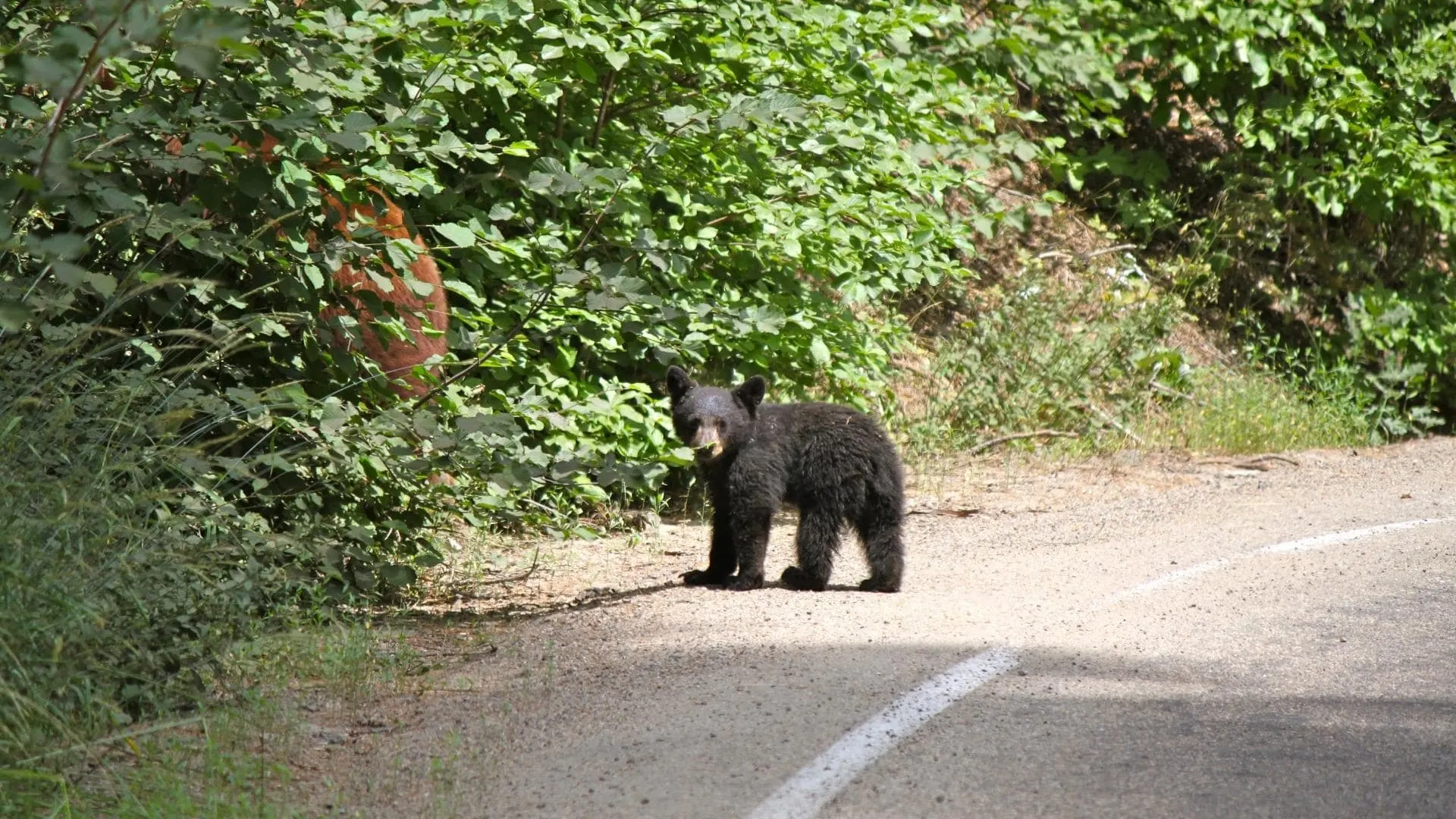
This little bear cub is hungry – and so are her family members and friends! When camping in Yosemite National Park, it’s important to take appropriate precautions so as not to entice bears to your campsite.
Some people like to store foods (or at least foods with strong smells) in plastic tubs. Not a bad idea at all, especially if they seal well.
And if you’re camping in a soft-sided trailer, you should store all food in the Bear Boxes supplied at campgrounds.
You’ll see instructions like these at Yosemite, and you’ll want to heed the advice. We all love and appreciate bears. But not up close and personal, and certainly not scrounging for food in our RVs!
Are You a Hiker? You Need to Know About These Yosemite Gems
Yosemite has some fantastic hiking trails, and if you’re a hiker, you’ll have a wealth of great trails to choose from according to your desired level.
The park has trails from quick & easy, to full-day or even multi-day hikes. There are some trails with wheelchair-accessible paths, and while we’re grateful not to need one, we sure appreciate the fact that Yosemite has some for our fellow RVers who need one.
There are a number of trails that take you out to gorgeous lakes, peaceful meadows, waterfalls, and amazing overlooks. Bear in mind that the trails out to the waterfalls and high overlooks tend to be among the most popular, and thus the most populated! But it’s still easy to find relative solitude in Yosemite, just by venturing a bit further away from the busiest tourist spots.
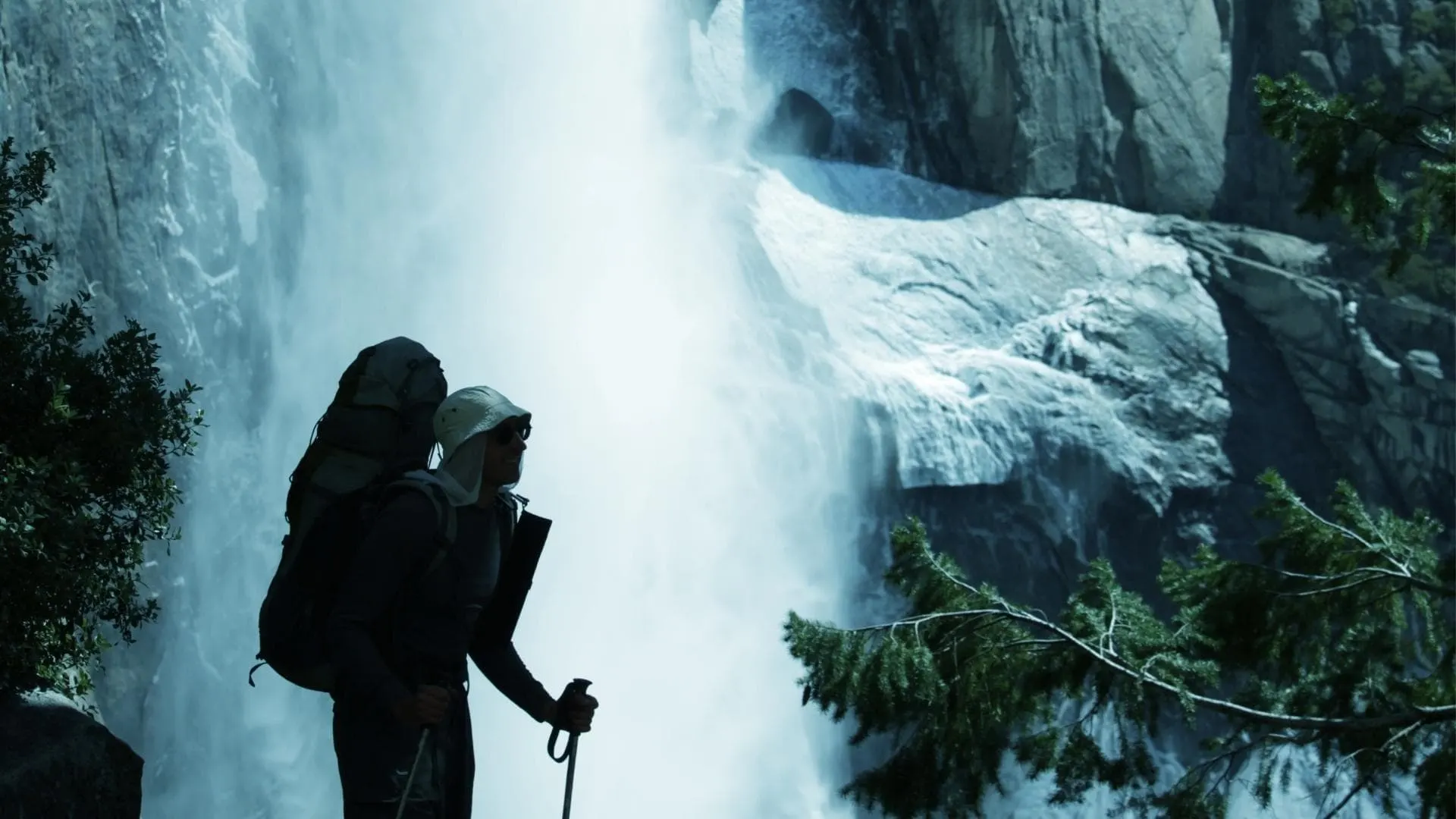
Hiking in Yosemite National Park is an exquisite experience, and there are hikes available for all levels of hiking abilities.
Shorter, easier trails down in the valley are generally the busiest, as they appeal to the largest majority of visitors, including those with children. Get you can still get away from the crowds when hiking in Yosemite, you just need to be able to manage somewhat longer hikes and those with greater gains in elevation.
We’re told that hikes along Tioga Road (Highway 120 through the park) may also be among the least busy, but those are only accessible in the summer. They generally open in late May or June. Even though they’re not in the most-known valley location, there’s some beautiful mountain scenery out there. To check current road conditions and chain restrictions, call 209/372-0200 (press 1, then 1).
You may have heard of the hike up Half Dome, one of the park’s well-known hikes. That’s a day hike but it’s a BIG one, with a 4,800-foot elevation gain (and drop, in order to return back to the valley), and an open and very steep section with cables (bring gloves!). That’s our type of hike, but we hike frequently. Be sure to choose your hikes wisely and according to the ability of the least prepared hiker in your party.
Some of the easier hikes that are still fabulous, while being more family-friendly, are the Mist Trail, Vernal Fall Footbridge, and Mirror Lakes.
Remember, too, that if you’d like to hike with a guide, you can sign up to do so. The Yosemite Hiking Excursion will be chosen to your ability and comfort level.
Looking for the Key Locations in Yosemite? Here’s What You Need to Know
Here are some of the key locations in Yosemite National Park.
Yosemite Valley
Yosemite Valley has a number of hotels, cabins, and three campgrounds. Sights in Yosemite Valley include:
- Visitor’s Center
- Half Dome
- El Capitan
- Bridalveil Falls
- Yosemite Falls
While in the valley, we also highly recommend visiting the Ahwahnee Hotel.
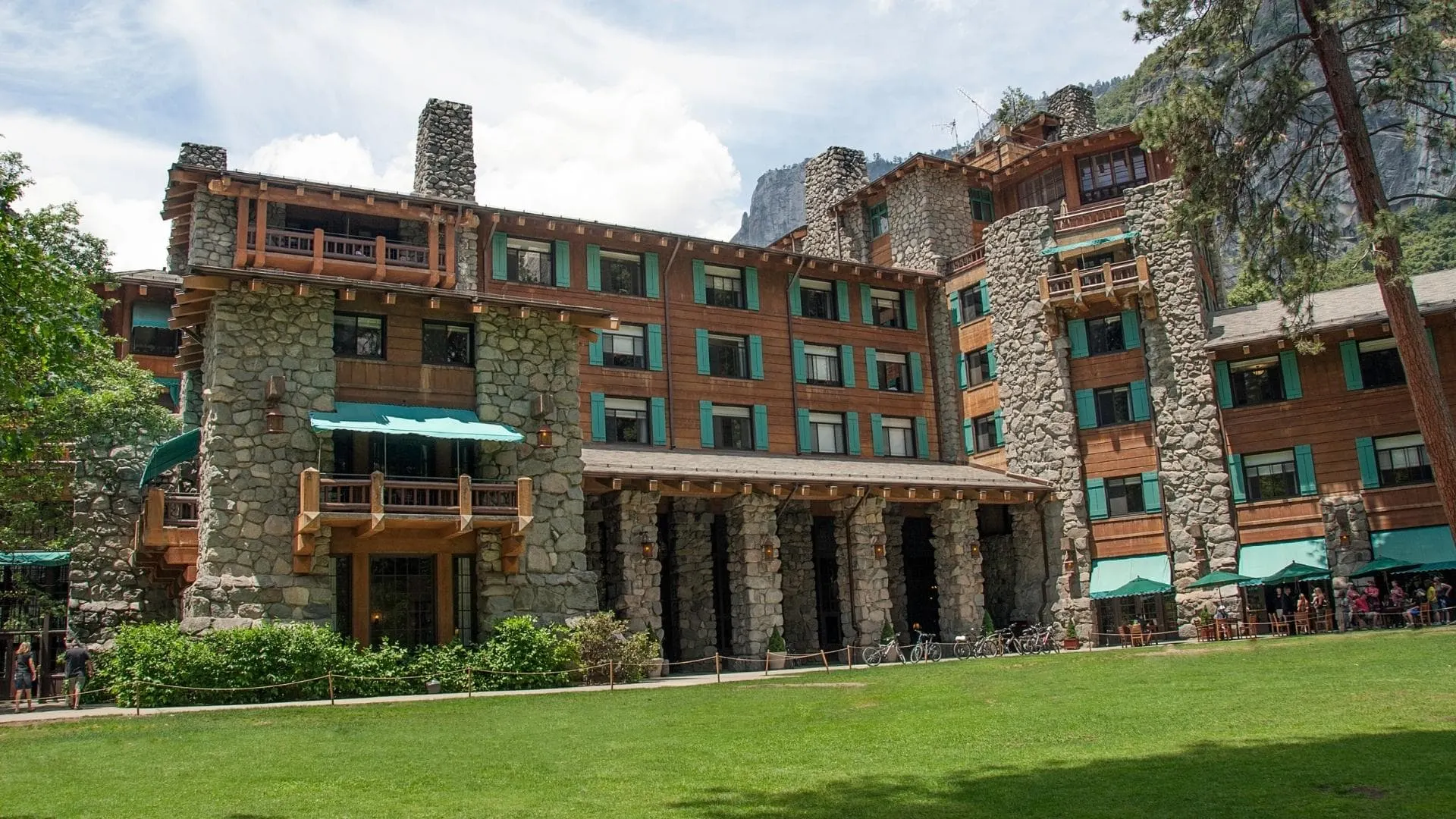
The famous Ahwahnee Hotel is an impressive structure nestled into the mountain, with spectacular views inside and outside!
Built in the 1920s, it is perhaps the crown jewel of National Park lodges… with its impressive stone and timber face nestled into the surrounding valley. It provides spectacular views… both inside and out! The public spaces bring back memories of a time gone by, with huge wooden beams, soaring windows, and spectacular stone fireplaces. You can stroll around the grounds, grab a drink at the bar, or enjoy a meal.
Wawona and the Mariposa Grove
This region includes the biggest and most easily accessible grove of Giant Sequoia trees as well as the well-known Wawona Hotel. The Wawona is an original mountain resort hotel from the Victorian era, established in 1856. Located on Highway 41 about 27 miles from Yosemite Valley, the Wawona is a National Historic Landmark and is near the Mariposa Grove of Giant Sequoias and the Pioneer History Center.
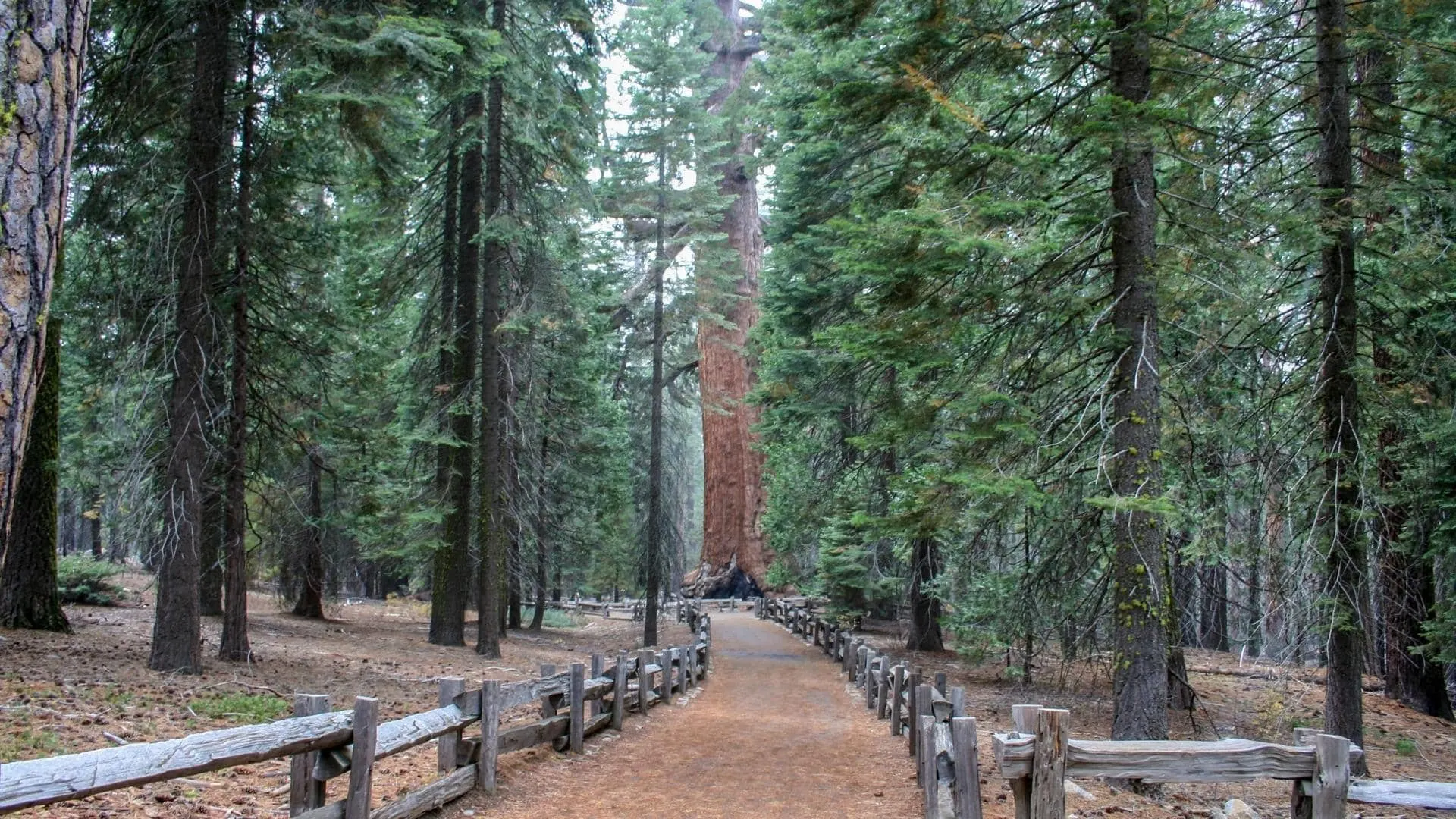
Mariposa Grove, with its awe-inspiring Giant Sequoia trees.
Tuolumne Meadows and Tioga Road
Well outside and above the valley, Tuolumne Meadows is a large, open meadow situated on the higher slopes of mountains just below the timberline. Within it, you’ll find the winding Tuolumne River surrounded by majestic peaks and domes.
Tioga Road is 47 miles of scenic driving between Crane Flat and Tioga Pass. Forests, meadows, lakes, granite domes, and turnouts with phenomenal vistas will be your gifts as you drive along this twisty road.
Once again, remember that Tioga Road is closed (snow!) until late May or June, and then open through October or November, depending on the weather.
Note also that within the first month after Tioga Road opens for the season, there may be no food, water, and other services…so if you plan to travel there in June, be prepared with adequate food and water, and remember that other services (like fuel and restrooms) will be limited or non-existent. The same is true from September until Tioga Road closes for the season.
And one more note if you’re reading this in the spring or summer of 2022: Tioga Road is being rehabilitated. Rehabilitation began in June of 2021 and is slated to be ongoing through the spring and summer of 2022. This means potential delays of anywhere from 15 minutes to an hour, depending on where and when you’re traveling. Some roadside parking areas may be affected as well.
Hetch Hetchy
Hetch Hetchy is accessed by a separate entrance from the rest of the park, in the quiet northwest corner. Hetch Hetchy Valley is beautiful in all seasons and offers one of the longest hiking seasons in the entire park.
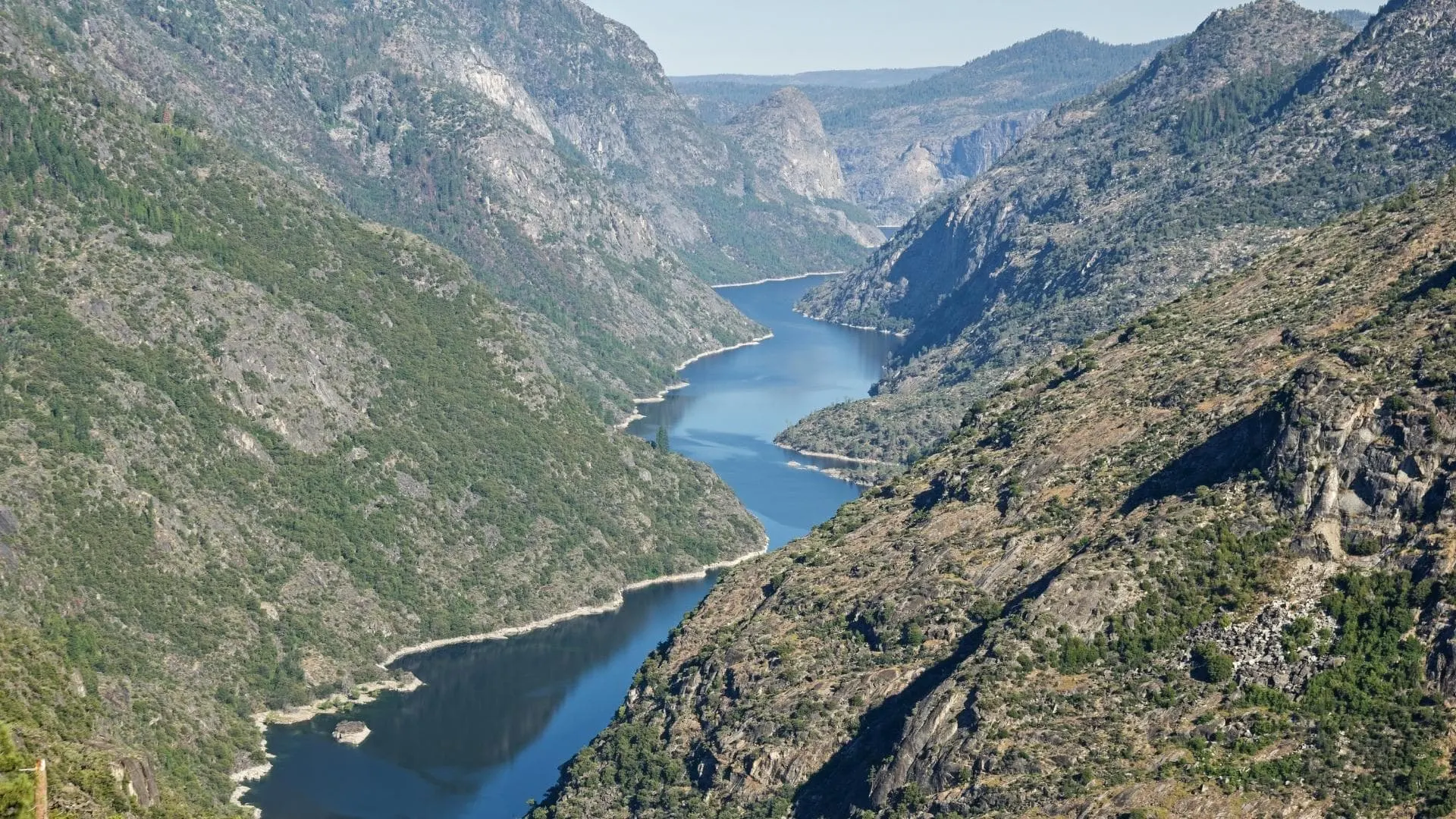
The phenomenal Hetch Hetchy Reservoir provides water to the City of San Francisco. For this reason, swimming and boating are strictly prohibited.
Located at 3,900 feet, Hetch Hetchy gives you thundering waterfalls and brilliant wildflower displays as well as remote lakes, amazing majestic peaks, and stunning canyons.
Be aware of a few things here: First, temperatures can be quite high in the summer months so prepare accordingly and have plenty of water.
You should also know that swimming and boating are prohibited in the Hetch Hetchy Reservoir which provides a water supply for the City of San Francisco. The prohibitions exist to maintain a source of clean drinking water.
Hetch Hetchy is part of the Tuolumne watershed and is located on the main stretch of the Tuolumne River.
Have You Enjoyed Yosemite RV Camping?
So tell us – have you visited Yosemite National Park and have you done some RV camping there? We’d love to hear about your experiences! Drop us a comment!
Geek Out With Us Every Week
Join our newsletter to learn about all things RV-related. Every week we offer free tips, tricks, product reviews, and more to our online community of RVers. So, whether this is your first time on the road or you’re a seasoned expert, we’d love for you to geek out with us!


RV Camper
Saturday 13th of May 2023
Great info! One clarification though. "Boondocking" refers to camping in undeveloped boondocks, not a designated campsite. Boondocking is allowed by BLM and in some cases, the USFS, but not US Park Service. Thanks for compiling all of this information.
Paul Roberts
Saturday 7th of May 2022
Great article on my favorite place in the world. One big error though regarding summer park entry reservation. Should you be so lucky to have a camping or accommodation reservation in Yosemite- Per the NPS website:"In-Park Camping, Lodging, or Vacation RentalsIf you have a reservation for one of the following, you do not need an additional reservation. You still pay the $35-per-car entrance fee upon arrival (credit card only) unless you have an annual or lifetime pass. Your reservation for in-park lodging or camping, a Half Dome permit, or a wilderness permit allows you to enter the park 24 hours per day for the duration of your reservation or for three days (whichever is longer).
A Yosemite National Park campground Curry Village, Housekeeping Camp, Yosemite Valley Lodge, The Ahwahnee, White Wolf Lodge, Tuolumne Meadows Lodge, or Wawona Hotel Private lodging or vacation rental in Wawona, Yosemite West, or Foresta Yosemite wilderness permit"So you don't need a timed entry res, but you still pay the entrance fee or use your parks pass. Three other notes: 1) With Glacier Point Road closed there are still a couple of trails up to Glacier Point and you will have a level of solitude only otherwise achieved in winter. The views are fantastic. The hikes are quite strenuous and bring water. 2) The Mariposa Grove was closed for several years for a major upgrade and set of conservation projects. It's fabulous, but go early in the morning to beat the crowds. 3) With campsite reservations the summer reservations each month are all filled with 60-90 seconds of them opening up so be fast on the keyboard!
TheRVgeeks
Saturday 7th of May 2022
Thanks for the detailed input, Paul. We can see you love Yosemite as much as we do!
Gay Tacoma Washington
Saturday 7th of May 2022
Hey guys. Another great article. I've never visited Yosemite Nat'l Park. I'd love to one of these days. These are certainly good things to know before you travel anywhere.